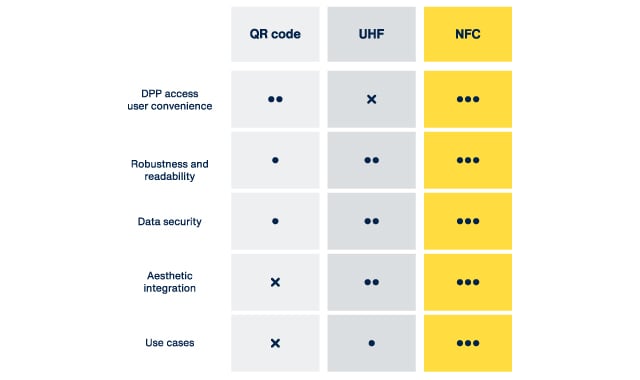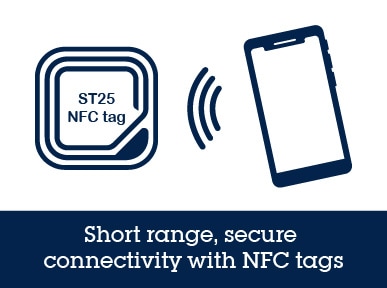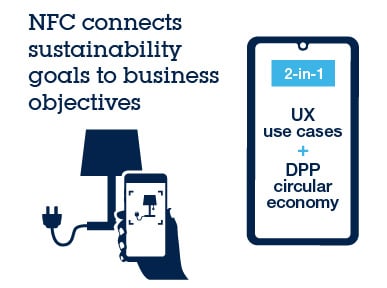Digital product passport: What it is, and how it can support the circular economy
The Digital Product Passport (DPP) revolutionizes product transparency and sustainability practices by providing comprehensive product lifecycle information, from manufacturing to end-of-life. This enables stakeholders—such as brands, consumers, and recycling/repair centers—to better understand a product's journey. With unmatched access to data on product origin, materials, environmental impact, and disposal recommendations, the DPP is an essential tool for achieving sustainability goals and enabling upstream and downstream communication across the supply chain.

EU regulations: Why it is time for brands to act
EU regulations: Why it is time for brands to act
Starting in 2027 with the Digital Battery Passport, the European Union (EU) will require nearly all products sold in the EU to have a Digital Product Passport (DPP). This initiative is part of the Ecodesign for Sustainable Product Regulation (ESPR) —EU Green Deal policy.
ST is actively contributing to the development of the European DPP standard, and is a member of the CEN-CENELEC JTC24 committee. While the EU has been leading the way, other regions are now considering the DPP.
How can brands create digital product passports?
The Digital Product Passport (DPP) ensures a seamless and essential connection between a physical product and its digital twin. Several technologies, also known as data carriers, can be used to transfer, and deliver data. Brands can use QR codes, which consumers can scan to access the DPP. However, QR codes can wear out, or can potentially be removed for aesthetic reasons. UHF technology is a much more robust data carrier but requires a specific professional reader. Available in nearly all smartphones, NFC technology offers the most convenient and secure option for brands. With a simple tap from a smartphone, customers can access the DPP in a fraction of a second.
Data carriers at a glance




What is NFC technology?
What is NFC technology?
NFC consists of a tiny, secure connectivity chip. Battery-less and highly miniaturized, NFC chips can be integrated into any product. The chip provides a secure link to the Digital Product Passport (DPP). And there’s more. It also offers extensive data storage that can be used to nurture customers at every lifecycle stage, using a personalized marketing strategy.

How does NFC secure the digital product passport?
How does NFC secure the digital product passport?
Every time we tap our smartphones or credit/debit cards at a payment terminal, we're harnessing the power of NFC. A proven data carrier in contactless payment, NFC is ideal for creating Digital Product Passports (DPPs) while protecting personal information. With NFC, extra features like privacy modes can be activated.
Why is NFC a universal data carrier?
NFC technology is mainstream, embedded in nearly all our smartphones. This widespread adoption is largely due to the efforts of the NFC Forum, which has established a universal framework to ensure maximum interoperability across devices. The Forum's members represent the entire value chain—from semiconductor companies like ST to OEMs, and smartphone manufacturers. Together, they are pioneering a new data structure called NDPP (NFC Digital Product Passport ), designed to optimize data management within the DPP.
By choosing a standardized data carrier, developers can benefit from a large set of advanced features and minimize the need for custom development and maintenance. Additionally, NFC is a robust solution for offline data storage making information accessible anywhere, anytime. It can also come with anti-tampering capabilities to ensure data integrity.

One technology, endless use cases
One technology, endless use cases
Imagine this: You've just acquired a stylish light fixture from a renowned Danish designer that integrates an NFC chip. With your smartphone, you can instantly access the origin of the exotic wood used, or the recycling information. NFC technology makes the DPP accessible with unparalleled ease and speed.
And it doesn't stop there. If the Danish designer has leveraged the full potential of the NDPP, you can delve even deeper. Access the designer's blog for a dose of storytelling, find inspiration for your home, and stay updated on new limited-edition products. You can even register yourself as the primary owner of the light fixture. Ready to rethink your interior? With the NDPP, you can seamlessly transfer ownership credentials stored in the NFC chip to the new buyer for warranty purposes. These are just a few examples of how brands can leverage the NDPP to create a multitude of use cases.
From basic to premium DPPs: what are the possibilities?
ST offers three types of NFC tags, each offering different levels of security. Whether companies are looking to secure URLs to Digital Product Passports (DPPs) or deliver premium DPP experiences for high-value goods, there's an NFC tag solution for every project.


